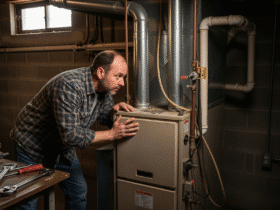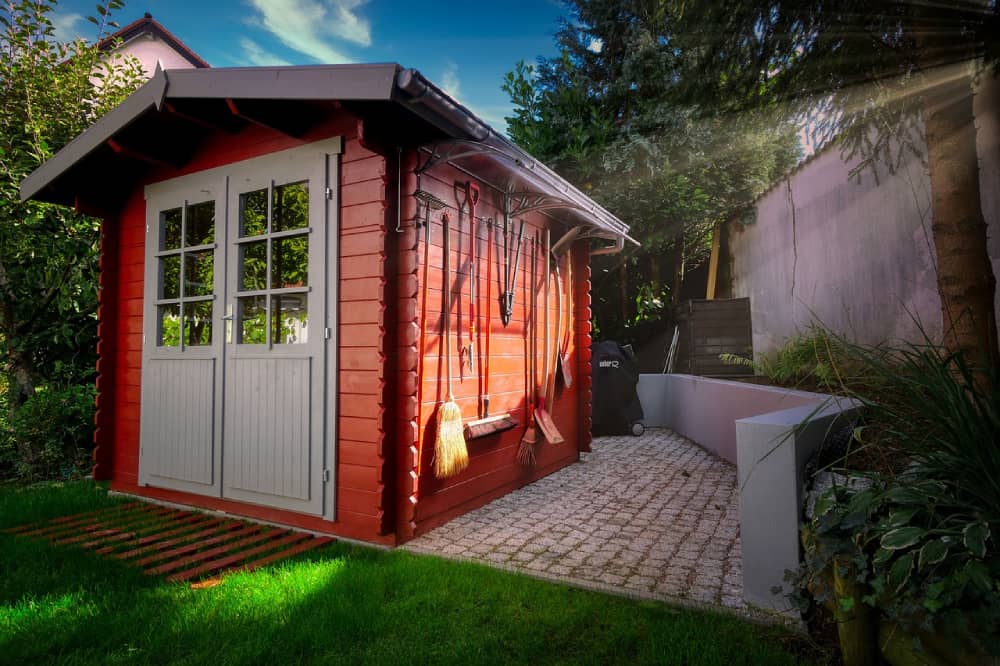Key Takeaways
- Recurring sewer line problems can create major property and health risks, with expensive consequences if left unchecked.
- Trenchless and advanced repair methods can fix sewer issues with reduced disruption, time, and cost.
- Detecting sewer line trouble early and choosing the right repair technology are essential for prevention and rapid recovery.
- Environmentally sound approaches reshape how communities manage and repair aging underground infrastructure for long-term safety and well-being.
Why Sewer Line Problems Persist
Sewer systems form the backbone of modern urban and suburban infrastructure, yet they remain one of the most overlooked components of our built environment until something goes wrong. A host of factors contribute to persistent issues with sewer lines. The age of many underground pipes—often 50 or older—makes them especially susceptible to cracks, corrosion, offset joints, and collapse. Many cities and towns in the United States still use clay, cast iron, or early-generation PVC piping, which, after decades under pressure and environmental stress, begin to show their weaknesses. Some pipes have even been encased in concrete or run underneath older trees, which causes additional strain as roots infiltrate and soil shifts. When these pipes deteriorate, recurring blockages, backups, or water contamination can result, disrupting daily life and damaging homes or businesses.
Urban sprawl and a growing demand for water services put even more stress on already overburdened systems. Additionally, extreme weather events—from deep freezes to heavy rains—exert extra pressure on the network, sometimes causing pipes to freeze, expand, contract, or move out of alignment. Many problems go undetected until they reach a critical point, as much of the system is buried and invisible without special tools. For a comprehensive overview of the leading sewer line damage causes, consider how repeated chemical exposure, environmental changes, and root invasion each wear down pipe integrity over time. Neglect or deferred maintenance also plays a substantial role, especially as municipalities face competing budget demands.
Much of America’s water and wastewater infrastructure is operating decades past its projected design life. This sobering reality means that property owners, communities, and government agencies alike must remain vigilant for signs of failure. Without consistent assessment and timely action, ongoing sewer troubles are likely to persist, leading to larger, more expensive disruptions and, in some cases, significant impacts on local health and ecosystem stability.
Common Warning Signs To Look Out For
Sewer line issues are often early warnings rather than catastrophic failures. Homeowners should be aware of these signs to prevent them from escalating into major emergencies. Common red flags include slow-draining sinks, showers, or bathtubs, which may indicate a main line clog or partial collapse restricting overall flow. Other signs include unexplained gurgling sounds, water stains, sewage odors, patchy grass above buried pipes, multiple plumbing fixtures slowing down simultaneously, and increased pests or bugs attracted by moisture and organic waste build-up. Persistent, recurring, or widespread symptoms indicate deeper trouble, and immediate investigation and correction can help mitigate total system failure, indoor flooding, and extensive cleanup costs.
Ignoring these signs can also lead to damage to the surrounding infrastructure, such as foundations or landscaping. Early inspections using video or camera technology can pinpoint the issue with minimal disruption. Preventive maintenance, like annual drain cleaning, helps reduce buildup that contributes to blockage. Some older homes may require updated piping to avoid repeated issues. Being proactive saves both money and long-term stress while protecting the value of your home.
Cutting-Edge Sewer Repair Technologies
The last decade has seen remarkable innovations in the inspection, diagnosis, and repair of sewer lines. Gone are the days when the default approach involved bulldozing large sections of yard or pavement just to uncover a suspected issue. Highly advanced pipe cameras can be snaked through drains, allowing technicians to view blockages, cracks, roots, or misalignments in real-time. Some systems even use sonar or digitally mapped sensors to detect leaks and weaknesses through thick soil or concrete.
These diagnostic breakthroughs are paired with modern solutions that allow technicians to restore function without gutting landscaping, driveways, or patios. Trenchless technologies, including pipe lining and pipe bursting, have become industry standards for minimizing downtime while maximizing repair durability. Pipe lining uses a flexible, resin-saturated material to “reline” the interior of an existing pipe, effectively sealing out leaks and creating a seamless new surface. Pipe bursting, meanwhile, involves threading a bursting device through the old pipe, breaking it apart while simultaneously pulling a new line into place. These techniques greatly reduce personal and environmental disruption, cut hours off repair timelines, and, in many cases, lower overall homeowner costs.
Not only do these innovations prevent prolonged loss of basic plumbing functions, but they also preserve property value, as full yard or pavement restoration becomes unnecessary. Regular use of modern diagnostic tools also leads to tailored repairs, so property owners are less likely to spend unnecessary funds on extensive, non-targeted digging.
Trenchless Sewer Repair: How It Works
The process of trenchless repair often starts with a diagnostic camera inspection to evaluate a pipe’s exact condition. Once located, the damaged section is prepared, frequently with advanced cleaning techniques like hydro jetting to remove debris and scale. For pipe lining, a flexible, resin-coated sleeve is carefully threaded or blown into the pipe. It is then positioned, inflated, and allowed to harden in place, sometimes using hot water or steam to accelerate the curing. This process results in a new “pipe within a pipe,” restoring strength, sealing out leaks, and resisting root intrusion moving forward.
In cases where pipes are irreparably damaged or have lost their shape, pipe bursting is the preferred option. A special conical bursting head is dragged through the center of the existing pipe using a hydraulic winch. As the head fractures the old pipe outward, it simultaneously pulls a new, high-density polyethylene pipe into place. The new material is strong, rustproof, and resistant to chemicals or root intrusion. Throughout both types of trenchless repairs, only small access points are needed,such as sparing lawns, hardscaping, or even mature tree roots from major disturbance.
Environmental & Health Benefits of Modern Solutions
The environmental and health benefits of trenchless sewer repair are substantial. By eliminating the need for major excavation, these methods prevent contamination of the surrounding soil and local water supply that could result from exposed sewage or disturbed buried pollutants. Trenchless technology also reduces air and noise pollution that comes from heavy construction equipment, safeguarding the tranquility and air quality of local neighborhoods.
Modern repairs allow damaged sewer lines to be sealed quickly, curbing the risk of pest infestations, indoor mold, and bacterial overgrowth. For families, this means a reduced likelihood of respiratory issues or gastrointestinal illness associated with environmental exposure to sewage. In densely populated neighborhoods, prompt and eco-friendly repairs help uphold community-wide standards for safety and environmental stewardship, making these options especially attractive for city planners and property managers.
Factors That Determine Repair Method Choice
The repair technique for a sewer issue depends on various factors, including the pipe’s material, internal diameter, location, length, extent, and type of damage. Proximity to major trees, buildings, or unique landscaping features can also influence repair choices. Inspection cameras provide a precise diagnosis, ensuring repairs are cost-efficient and tailored to the property and soil conditions. Regulatory codes, timeline, and budget are also important considerations. Some situations require quick, affordable repairs, while others require extensive planning and investment. Working with experienced professionals ensures the chosen solution fits the property’s long-term needs, considering future maintenance and code compliance.
Preventative Tips for Long-Term System Health
To prevent sewer line blockages, have your sewer line professionally inspected every 12-18 months, especially in older homes or tree-heavy areas. Avoid disposing of grease, wipes, or hygiene products down toilets or drains, and avoid landscaping directly over main sewer lines to limit root invasion and pipe damage. Install a backflow or backwater valve in flood-risk zones to prevent city sewage from entering your home during surges or storms. Educate your household or tenants on pipe-safe habits and ensure you know the main clean-out access for quick responses.
When To Call a Professional
Many people attempt to troubleshoot minor plumbing issues on their own, but if warning signs persist—especially if multiple fixtures are affected, odors worsen, or problems return after temporary fixes—a professional assessment is the wisest course of action. Experienced sewer repair technicians have precise diagnostic equipment and the skills to quickly identify, localize, and address even deeply hidden sewer challenges. Early intervention by experts doesn’t just restore comfort and sanitation; it helps prevent costly property damage and lengthy repair projects in the future.
Bringing in a professional ensures all work is performed to industry and municipal standards, and that long-lasting solutions, instead of temporary patches, will keep your home or property safe for years to come.









